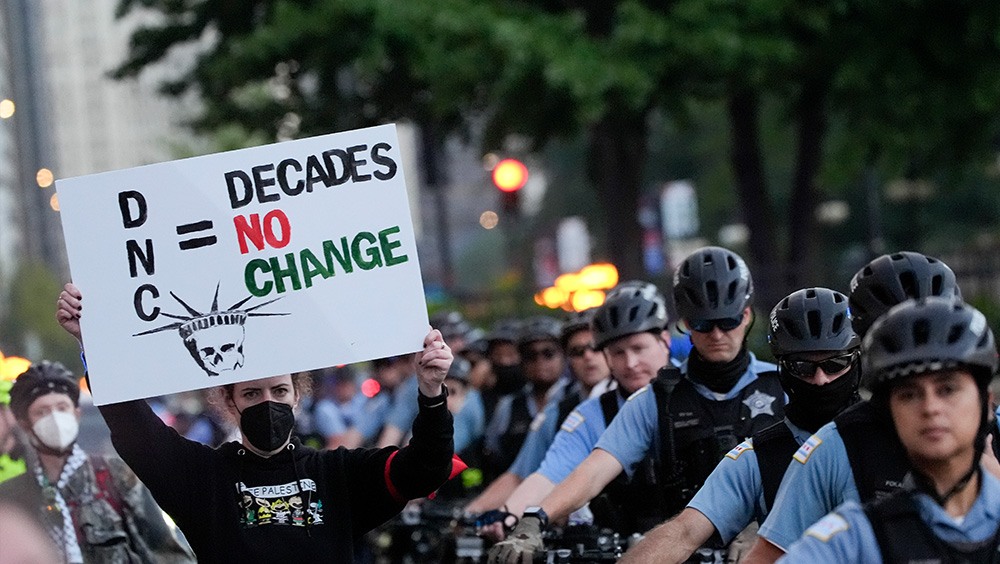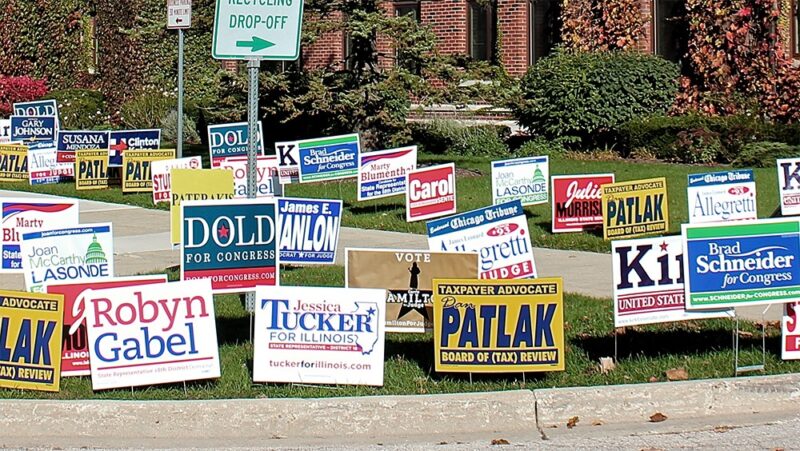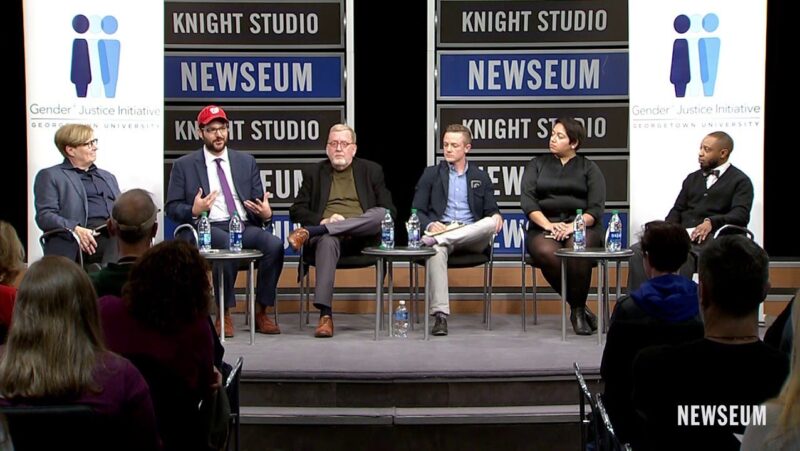Presidential Convention Protests: First Amendment Protections, Limits

Every four years, political parties in the United States gather to select their candidates for president and to establish their party platforms.
The nominating conventions draw hundreds of party members and draw people opposed to the parties and their presidential candidates.
As political parties gather to select nominees, they also expect and plan for protests.
Are there limits on protests at presidential nominating conventions, or are they protected by the First Amendment?
The First Amendment protects the right to peacefully assemble in protest. But like all First Amendment freedoms, this right is not unlimited.
Here's everything you need to know about what is — and isn't — protected when it comes to presidential convention protests.
What are the limits on protests at presidential nominating conventions?
Limits on protests at presidential nominating conventions inside the convention venue
Political parties, whose members may be involved with or running for roles in the government, are not part of the government. They are private political organizations. Political parties are not bound by the First Amendment, yet they have their own First Amendment freedoms of speech and assembly. They can decide who can access party events in privately owned venues. They can ask for law enforcement’s help to keep people who are not authorized to enter out of the event – as long as people are not excluded based on age, race, gender or disability.
But they do not control public spaces outside of these venues where their privately run event is held. The First Amendment does apply in those public spaces and the freedoms of speech, assembly and petition offer protection to peaceful protests subject only to certain narrow limitations.
Limits on protests at presidential nominating conventions outside the convention venue
Violent protest is never protected by the First Amendment. Law enforcement needs to give enough clear warning if a protest is becoming unlawful, and give people a safe way to leave, before they arrest anyone. But damaging property, violence toward others and obstructing access to the convention can all be limited and punished.
Similarly, unprotected speech such as true threats and fighting words at a convention protest can lead to punishment.
When required to maintain safety and the secure proceedings of the convention, the government can set limits on protests at presidential nominating conventions based on the time, place and manner of protests, as long as the limit only incidentally burdens speech and allows protesters to still be heard.
One type of limit on protests at presidential nominating conventions that can be controversial are “free speech zones” or “demonstration zones.” Whether these designated areas for protests violate protesters’ First Amendment freedoms depends on how and where the areas are set up.
For example, at the Democratic National Convention in Los Angeles in 2000, a court said that the established demonstration zone was too restrictive and violated the rights to free speech and assembly. On the other hand, a court said that a demonstration zone at the 2004 Democratic National Convention in Boston was OK because it was less restrictive and enabled protesters to exercise their rights while ensuring security.
Disputes over protest areas and security arrangements occur before many conventions.
What protections are there for protests at presidential nominating conventions?
Protest protections depend on where the protest is held
How highly the right to protest is protected depends on where the protest takes place and what that space is traditionally used for.
The government uses a spectrum of designations to determine how protected protesting is in each location.
Protest is most highly protected from government limits in public places traditionally used for protest or speaking, like a public town square or public park. These are called traditional public forums.
RELATED: Everything to know about protesting on public property
There are also other public spaces where speech may occur. A designated public forum is a space that the government opens for speech purposes. A limited-purpose public forum is open to certain groups, for certain set times and for certain purposes. Public sidewalks outside an event venue, if they are owned by the government, may be available for protest to some extent as limited purpose or specifically designated public forums for the period of the conventions.
Generally, the government can only restrict speech in these types of forums if restrictions are unrelated to the message of the protest or the government has shown a compelling need for the restriction and still allows as much speech as possible.
Government buildings near a convention center or arena, like police stations or the inside of public university buildings, are nonpublic forums. These are places where the government is simply conducting its business and expression isn’t the primary use of the space. There the government can enact any reasonable restriction on speech as long as it applies to speech of all viewpoints.
On the other hand, a privately owned event venue that has been rented out for an event such as a political party’s convention can be completely closed to speech and protest. The First Amendment right to protest does not apply to private spaces. The event organizers — the political parties themselves — have exclusive say over protests unless state constitutional rights provide otherwise.
Protest protections often depend on the security risks
Restrictions on speech that are designed to protect public safety and national security do not depend on the message being conveyed. The point isn’t what the speakers or protesters are expressing; it’s the danger of having many people in a sensitive or unsecured location. Government planners must figure out how to keep everyone safe and secure while protecting the right to protest as much as possible.
The government isn’t concerned with who is speaking or what they are saying, but who might be in danger and how to protect them. Since 1968, Congress has authorized the Secret Service to protect presidential candidates and, since 2001, the U.S. Department of Justice has provided federal funding for security at major party conventions. These events are typically designated “national special security events.”
Any restrictions the government makes on protests for safety reasons need to be as minimal as possible to stop specific security risks. The burden will be on the government to demonstrate that the restrictions are necessary considering the threat, which means (1) no two events are the same when it comes to permissible restrictions and (2) the circumstances for any individual threat could change based on new threats or other facts.
For example, if a presidential candidate is scheduled to speak at the convention at a certain time, and the government has heard of a specific plan to try to hurt the candidate when they arrive, officials are likely justified in requiring protesters to stand farther away from the convention entrance around that time, along with other measures necessary to enhance safety. The same is true if there has been a recent threat to the candidate – such as the assassination attempt on former President Donald Trump – that raises the specific possibility of another threat to that candidate, that event or even similar events.
On the other hand, a restriction that creates a large “no protest” zone around the convention venue to the point where protests can’t be seen or heard by convention attendees would violate the First Amendment because it inflicts more than an "incidental burden" on speech; it prevents meaningful expression entirely.
In sum, there are limits on protests at presidential nominating conventions, but protests still must be allowed to the extent possible while ensuring safety.
Sign of the Times: When, Where and How Political Signs Can Be Restricted
Watch: Rise Up: LGBTQ Rights, Then and Now
Related Content
Religion. Speech. Press. Assembly. Petition.
Learn about the First Amendment.

